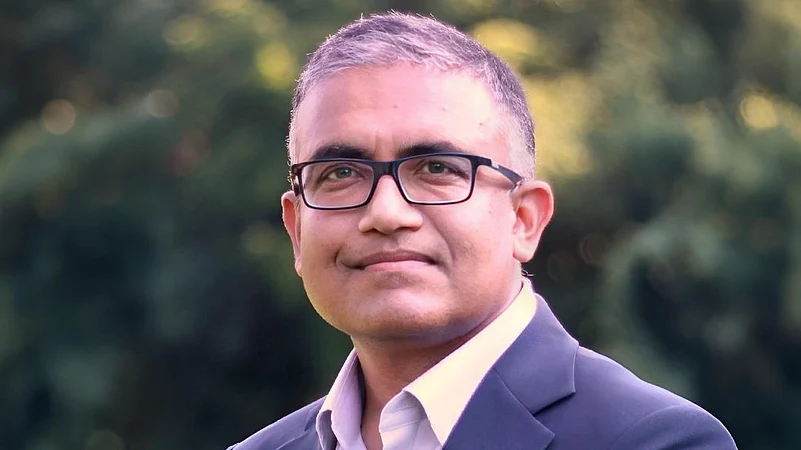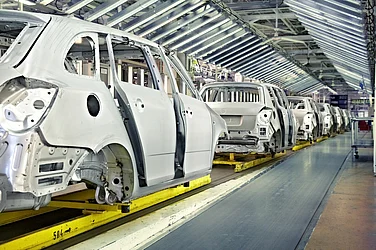At a time when the declining sales of small cars is causing jitters for market leaders like Maruti Suzuki, Pune-based startup Vayve Mobility is gearing up to enter that very segment—through compact, two-seater electric vehicles.
The sale of small cars has declined from 460,772 units in FY19 to 133,397 units in FY25, Siam data shows. However, Vayve is confident that its founding team's strong manufacturing experience and high-value proposition will help it overcome concerns about the shrinking market.
In an interview with Outlook Business, Vilas Deshpande, co-founder and COO of Vayve, said large OEMs could not offer an aspirational small car which is the reason behind the market shifting to SUVs. Edited excerpts:
Electric four-wheeler is not something startups have gone into at a large scale, unlike two-wheelers. What was the thought behind breaking the norm and who are your consumers?
We’ve been working since 2021 to build something in the space that nobody else is doing. In the beginning, we decided not to get into the two-wheeler or three-wheeler business because we thought it was turning into a commodity.
The four-wheeler space is extremely hard to get into and deliver. But that’s also something you want to have high ambition to work on. So we focus on city mobility. We don’t want to make larger vehicles—there are enough players doing that. But nobody’s making small one- or two-seater vehicles in India. Our objective is to make a small two-seater car—for two adults and a child. A vehicle for a single person to drive around the city, go to work, drop kids to school—travel within the city in comfort and convenience.
With electric drivetrain, you can make a comfortable car with all features of a premium compact hatchback—except smaller. We’re not compromising on user experience. They get that in a smaller, efficient package. Because of that, we’ve incorporated a solar roof.
A typical city driver covers about 35 kilometers per day. About one-third of that can come from solar energy. A lot of people globally are trying to incorporate solar into cars. It’s a technically difficult challenge, but because we have the right size and efficiency, we’re able to do it.
We have four co-founders, with experience in large volume manufacturing. Our core expertise from our prior startup is in industrial electronics design and manufacturing—one of the core skills needed to build an electric car. Hence, we have the competence and manufacturing knowledge to do this job.
Indian market is shifting to SUVs and the share of small cars and hatchbacks is declining. Do you think it was the right time to get into four-wheelers—and that too, small cars?
That’s exactly where you have to think about what's driving what. When manufacturers say nobody is buying small cars, ask them: what was the last well-developed, aspirational small car they produced?
Consumers only buy what manufacturers offer. If they don’t offer good-featured cars—which Chinese companies are doing well in the small car segment—then consumers go to larger vehicles. It’s a chicken-and-egg problem.
But you can’t escape the fact that India is a value-conscious market. If you give people great value in a small package, they love it. We’ve been doing consumer research for four years. We showed our EVA prototype at the 2023 Delhi SIAM Expo and collected very insightful consumer data which led to the Eva we started pre-booking at the 2025 Bharat Mobility Expo.
We got tremendous response. It was clear—there’s a broad market for small electric cars in India. That’s why we’re confident.
As a startup, we have to be at the beginning of the hockey stick curve. If the market is already established, it’s hard for a startup to break in. So we are creating a market. And we know we can because consumers want small cars.
What have the Chinese companies done differently that they are leading the small car segment?
In China, the EV industry has been developing for 10–15 years. It’s a hard-earned outcome. They realized the electric drivetrain suits countries like India and China. You don’t need long range—you need short-range, comfortable vehicles for crowded cities.
Look at the BYD Seagull—a sub-$10,000 car selling like crazy. In India, look at the MG Comet—the successor to the two-seater Wuling Mini EV, which sold over 1.4 million units in China.
That’s validation. In markets like India, China, Southeast Asia, and Africa—people want affordable, value-packed cars—not 600-mile range cars. The Chinese have figured this out and are delivering. We’re following a similar strategy for India.
Do you think Indian companies hesitate to bet on small cars because of Tata Nano?
Every industry has a learning curve. The Tata Nano was well engineered but had problems: initial quality issues, price vs. promise mismatch, and consumer perception.
That was a marketing tragedy. You can’t sell a product by making people feel socially disadvantaged. We’ve learned from that and other global small car ventures.
In India, the industry is traditional, conservative, and says, “this will never work.” But consumers change. We’re not targeting the same segment as Nano. EVA is meant to be a second or third car in the family. Since Nano’s time, incomes have tripled. People now want a compact city car, not just an aspirational vehicle.
They’ll keep the big car for longer trips, and use our car for daily city use. That’s a big difference.
There’s also the example of Mahindra’s Reva e2o. It was made by a Bangalore-based company, then bought by Mahindra. It used LFP lithium cells. But it was ahead of its time—Rs 5 lakh price tag made it look expensive. So again, the value proposition didn’t match. Big companies can also make mistakes. We’ve learned from them—and are working to avoid repeating those mistakes.
What's your pricing strategy for EVA?
The price point we’ve decided is Rs 4 lakh for entry-level car, Rs 5 lakh for mid-range and Rs 6 lakh for the top-end model. India has a wide spectrum of incomes. Even if 10% of the population can buy a car, that’s still a huge market—10% of 1.5 billion people. It’s an enormous market.
If someone wants to buy a second car, Rs 4–6 lakhs is not a big deal. People aren’t worried about the car’s price. They're more worried about whether a startup can deliver. So we’re taking pre-orders now—Rs 5,000 booking amount, fully refundable anytime. If someone doesn’t believe the car is being produced, they can get their money back. We’ve taken care to ensure people don’t feel like they’re risking anything by booking Eva.
How many bookings have you got till now, and when do you plan to start deliveries?
The car will be available in the second half of 2026. We need at least a year and a half before delivering cars to customers. We've been working on it for four years, but another 1.5 years are needed to set up the production line. The number of orders—we’re not sharing publicly, but I can tell you we’ve already sold out the first year of production.
So what is your production target for the first year?
It depends. Typically, it’ll be in the few thousand cars.
What kind of challenges do you see for a startup in four-wheeler and competing with the likes of Tata and Mahindra?
Competition comes later. First, the challenge is that you must win versus yourself. Building a car is far harder than a two-wheeler. It’s a larger vehicle, with more safety norms. There’s more technical validation, supplier agreements, and a bigger plant—unlike a two-wheeler assembly line. Complexity is much higher. That’s why few dare to go into four-wheeler manufacturing. It's not easy—even with readiness and knowledge, we still have to do so much work, and it takes time.
But competition isn’t an immediate concern. India is a vast market. There’s space for us and a few other small car manufacturers—besides big players. Big manufacturers are focused on their current segments. We’re not competing directly with anyone in the quadricycle category. Competition with big players will come in after 3-4 years. Right now, it’s about getting the car to market, delivering quality, reliability, and meeting cost targets.


























